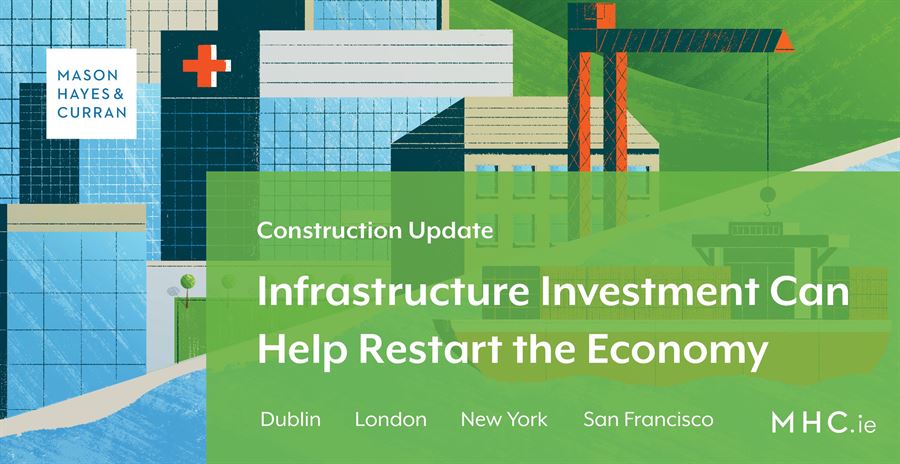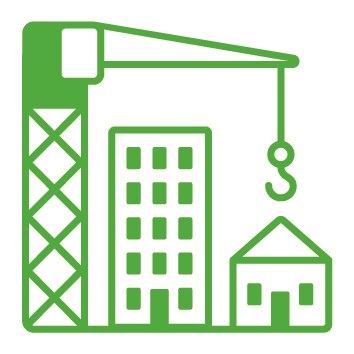
Project Ireland 2040 sets ambitious long term national targets for capital investment in areas including health, housing, education and transport. Now, more than ever, the Irish government should prioritise investment in infrastructure to:
-
Support the economy
-
Support jobs, and
-
Improve quality of life and increase Ireland’s productive capacity
Supporting the economy
Many industries have a valid claim for support due to the effects of COVID-19. Front loading infrastructure and housing developments from Project Ireland 2040 will support the construction industry and its workers, reduce unemployment and have a multiplier effect in terms of other spin-off economic activity.
After the last recession ten years ago, the policies pursued by the Irish government led to a reduction in capital spending and also a shortfall in homebuilding. They should not be repeated. Otherwise further infrastructure deficits in public transport and healthcare could present themselves in future.
 Supporting jobs
Supporting jobs
An unintended consequence of reduced capital investment in the 2010s was the shrinking of the construction industry. Many skilled workers either left the industry or emigrated. It took several years for capacity to ramp up again and for projects to be delivered, the most tangible example being the highly publicised Irish housing shortage. A large and consistent pipeline of work will make a big difference in retaining and attracting skilled workers helping to ensure that essential public projects are delivered.
Quality infrastructure
In addition to improving the quality of life of Ireland’s residents, any developments in transport, housing and healthcare will help attract multi-national companies and skilled workers that are a key part of Ireland’s economic offering.
Why now?
EU rules on national budget deficits are unlikely to be strictly applied for several years and State Aid rules have been relaxed, with the aviation sector already benefiting. It is clear that Member States have to take extraordinary measures to support their economies and that new approaches are needed. The European Central Bank’s purchasing activity in the bond markets should also ensure that governments can continue to borrow at low interest rates.
These are appropriate policy responses which set the stage for Member States to pursue ambitious public sector projects. They are in contrast with the position ten years ago when Irish government borrowing costs increased sharply and the strict application of national budget rules meant that capital spending had to be cut.
Comment
The work done over many years to restore the Irish public finances has put Ireland in a strong position to borrow at low rates. Private sector investment in infrastructure projects can also be harnessed through public private partnerships (PPPs), with the added benefit that State procurement through PPPs can be ‘off balance sheet’. This is a particular advantage in times of economic and fiscal crisis, providing a counter-cyclical investment mechanism to deliver priority capital projects if they cannot be funded by the State.
The European Commission recently recommended that the Irish government should front load capital investment from Project Ireland 2040 and promote private investment to help restart the economy. It seems lessons have been learned about the downsides of not investing in public sector projects after an economic shock.
For expert advice on the planning or execution of your existing or contemplated development projects, contact a member of our Construction & Engineering team.
The content of this article is provided for information purposes only and does not constitute legal or other advice.






